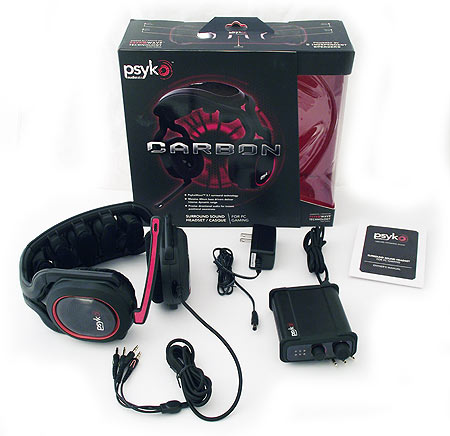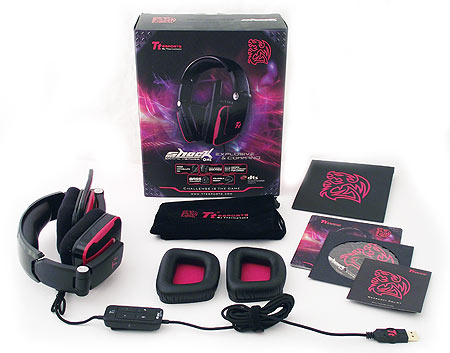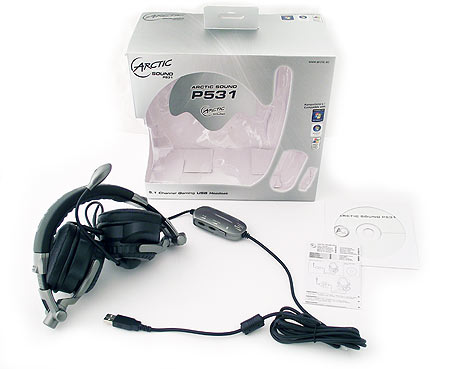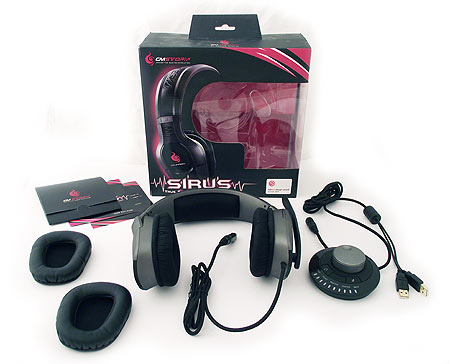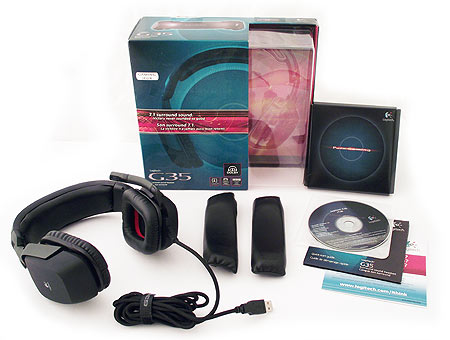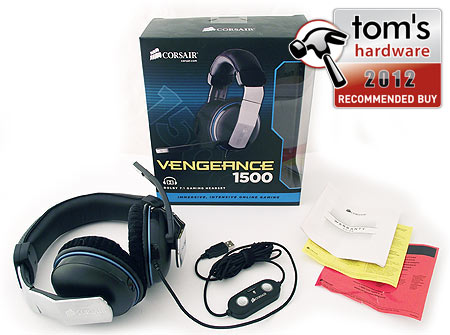Eight 5.1- And 7.1-Channel Gaming Headsets, Reviewed
Surround sound headsets are often more practical than a home theater system attached to your PC. We compare eight premium models from Arctic, Psyko, Cooler Master, Logitech, Creative, Thermaltake, Corsair, and Razer to figure out who sells the top option.
Subjective Testing And Conclusion
We're pretty well off when it comes to subjective testing because we have a lot of models to compare. Only a really terrible headset would sound bad if we didn't have a broad enough field. Fortunately, with eight reference points, it should be possible generate some pretty relative observations.
But first, I want to talk about surround sound gaming. Specifically, positional audio and the ability of these headsets to convey the source of a sound. Surround sound is a key feature for each of these products. And when you're gaming competitively, it’s important to hear where enemies are coming from.
I’ve never expected much from virtual surround solutions that rely on a single speaker in each can to create positional audio. During game testing, though, I actually did hear things behind me, and instinctively turned to face them based on the perceived source. That was a big surprise that, for me, helped validate the legitimacy of virtual surround sound. In fact, I have to say that it didn’t really make a difference whether the headset included four drivers in each ear or just one. In both cases, I was able to discern where sounds were coming from more effectively.
In order to be sure it wasn't just placebo, I put a number of people in front of a PC with each headset, blindfolded and facing away from the screen. Everyone could accurately pinpoint the source of the sound using the models limited to virtual surround. All of the surround headsets we tested returned similar results, so we can't discriminate against the products equipped with virtual or actual surround capabilities.
Psyko Carbon
Psyko introduces its own unique flavor to the 5.1-channel surround headset segment, emphasized by an unmistakable design and unique features, such as the ability to open up the ear cups to hear sounds outside the game. It offers the best microphone quality by a landslide.
Unfortunately, the Carbon setup is heavy and overly tight, leading to discomfort over time. That could be acceptable if everything else about the headset was perfect. The real problem with this product is that is simply doesn't sound very good. Its mid-range is misrepresented or distorted somehow, and the experience it provides falls flat in games and music. These aren't the worst-sounding headphones we've ever auditioned, but for $200, I expect something that sounds at least as good, but preferably better than the sub-$100 competition.
Thermaltake Shock One
Thermaltake’s $93 entry looks great and includes a decent bundle of accessories, such as extra ear pads. It’s collapsible, which makes it relatively easy to tote in the included velvet carrying bag, and bundled software hits all of the important personalization points like equalization and DTS' Surround Sensation technology.
In utilizing DTS' positional audio algorithms, this two-speaker headset does its job well. It even has a fun voice effect feature. It’s relatively light and feels comfortable, although it’s a little tight over time.
Our only real issue concerns sound quality. Unfortunately, that’s the important part. While the headset delivers great bass, the high-end is weak and playback seems hollow. Naturally, it's possible to tweak the equalizer for better results, but we couldn’t seem to get the Shock One to sound exceptional compared to its peers. On top of that, the driver doesn't address the subwoofer channel unless LFE is enabled, and the only way to enable it is to follow a convoluted and undocumented series of steps in the control panel. We like the Shock One, but it's rough around the edges, and that LFE control issue really needs to be addressed.
Arctic P531
At $50, Arctic enables true 5.1-channel audio to the lowest price point in our round-up with its P531. Cutting costs in reflected in lower-quality construction than the rest of the playing field, and we’re not fans of the remote control mechanism. The headset is a little heavy, although it's fairly comfortable (despite the small ear pads, which make you think you should be folding your ears into them).
Having said all of that, this product offers up a decent auditory experience. It is a little hollow-sounding at times, but when you take its price into consideration, Arctic actually does pretty well. Additionally, the driver includes a solid list of granular controls, plus extras like real-time voice effects. The only other feature we would have liked to see is a virtual surround mode to apply to two-channel music.
With all things considered, the Arctic P531 is an appropriate product for its price.
Cooler Master CM Storm Sirus
At $115, Cooler Master’s Sirus is the second most expensive headset in this round-up. At that price, you're getting true 5.1-channel hardware in a headset, the choice between USB or analog connectivity, a set of cloth ear pads for folks who prefer the material over the stock leatherette pads, and the best control pod hardware (a heavy, high-quality dial) of any other headset.
At 13.3 oz, this product is fairly heavy, though surprisingly comfortable. Its software panel features excellent controls, along with extras like Flex Bass II, environmental effects, and voice effects.
Although it's a good all-around headset, the Sirus' sound reproduction left us wanting more. We'd stop short of calling it bad, but there's a hollowness to is that isn't natural. Fortunately, the equalizer goes a long way to minimizing the effect that bothers us. Were the Sirus a little cheaper, it would have ranked higher up on our favorites list. But at $115, it’s a little too expensive relative to the competition.
On the other hand, we do feel that this is the best option with true 5.1-channel capabilities.
Logitech G35
Logitech’s G35 is a premium $95 entry. At that price, you get an attractive design with quality construction. The company went against the grain and implemented innovative controls on the left can, which we think is a brilliant move that lets you change volume, surround, and mute settings without fiddling around for a controller hanging off of the cord. On top of that, the G35 also has three programmable G-keys.
This headset comes with three differently-sized headband pads to adjust for comfort, and although it’s a tad heavy at 12.3 oz, gaming for short periods is quite comfortable. Over time, we think the G35 is a little tight, though.
A rotating boom automatically mutes the microphone in the up position, which is also appreciated. More important, the headset sounds pretty good too, serving up great bass and highs. The mids are a little muted compared to the rest of the spectrum, but we found this to be fairly easily adjustable with the software equalizer.
Speaking of software, Logitech includes an elegant suite of useful tools, and even some fun extras like voice effects. At the end of the day, we cannot deny that Logitech's G35 is a solid headset.
Best Budget Choice: Creative Sound Blaster Tactic 3D Sigma
Creative’s $63 entry isn’t going to win any quality awards. It looks a little cheap, it has a thin ribbon cable, and we struggled to keep its microphone sponge cover from falling off. The ear cups are clearly designed to show off illuminated accents, but this model doesn't have them.
Like Han Solo said, though, "...she's got it where it counts, kid." The Tactic3D Sigma is armed with powerful 50 mm drivers that can be made to sound better than most of the competition, especially when you dial in the equalizer and THX TruStudio Pro virtual surround settings you like best. Accessing all of that software is easy thanks to Creative's clean, attractive interface.
At 10 oz, this is a very light headset, which makes it easier to also be quite comfortable. A simple, effective inline controller features a clip for your clothes. Moreover, you can use it on the USB bus or attached to analog outputs on your discrete sound card. Do you take real-time voice effects more seriously than you’d care to admit? Creative includes 19 unique voice profiles, plus the ability to customize and create your own with eight slider controls.
Bottom line, though: when you take the time to configure it properly, this headset sounds very good. It boasts deep bass, good mids, and crisp highs that rival competing models that cost twice as much. For its ability to perform well at an affordable price point, we're happy to award Creative's Tactic 3D Sigma our nod of approval.
Tom's Recommended Buy: Corsair Vengeance 1500
Corsair’s premium entry costs $85. If you look at its classy brushed metal finish, though, you might assume that it's one of the more expensive options in this round-up. A sparse bundle is apropos given the price, though it's worth noting that you only get a warranty guide and driver download link with the headset.
Instead of a fancy box of accessories, Corsair spend its budget on the basics: impressive 50 mm drivers that sound absolutely wonderful compared to the rest of the playing field. Yes, they’re overly crisp at the default setting, but a little tweaking through the software equalizer makes them untouchable (even if Razer's Megalodon comes close). Dolby's Pro Logic IIx technology works like a charm, and these headphones sound equally great playing music or gaming.
This isn't the lightest headset in our round-up, at 11.4 oz. And they're a little tight, too. But we certainly wouldn't call them heavy or uncomfortable. In fact, large memory foam ear pads go a long way to making this model wearable over long periods of time. Corsair's driver software does its job, even if it isn't loaded with features, so don't expect environmental or voice effects. Make no mistake, though, this headset earns our more prestigious Recommended Buy award for its sound quality. Priced at $85, it doesn't even break the bank.
Honorable Mention: Razer Megalodon
Razer’s Megalodon came close to taking our top recommendation. Its sound quality is just about on par with the Corsair Vengeance 1500, but it has so many other things going for it, too: an illuminated control pod with surround channel and volume level settings, the ability to dynamically switch between two- and virtual 7.1-channel audio at the touch of a button, and microphone mute/sensitivity/level controls. At 8 oz, its the lightest contender, and it's also the most comfortable. Razer's style is both functional and chic, underlined by illuminated logos on the ear cups. The Megalodon even comes with an awesome carrying case and doesn't require its own driver. Just plug it in and go. So, what's the problem?
We have two issues with the Megalodon: the fact that it lacks an equalizer and its price. Paying $127 isn't bad when you consider the comprehensive package. Compared to Corsair's Vengeance, though, that's a steep 50% increase. We're more disappointed in the lack of an equalizer. A $127 gamer headset limited to USB connectivity should be more configurable than this, plain and simple. It's a shame that Razer doesn't have its own driver interface. We get that the company makes serious gaming peripherals, and we don’t care about the lack of extraneous voice and environmental effects. But that EQ is a must. The only sound adjustment on the control pod belongs to the bass channel.
Our complaint registered, the Megalodon still sounds great, and we wouldn't fault anyone for paying $127 to possess the Magalodon’s unique attributes. Therefore, we're giving this headset our Approved award too, a stamp of approval.
Current page: Subjective Testing And Conclusion
Prev Page Benchmark Results: Frequency Response And Microphone QualityGet Tom's Hardware's best news and in-depth reviews, straight to your inbox.
Don Woligroski was a former senior hardware editor for Tom's Hardware. He has covered a wide range of PC hardware topics, including CPUs, GPUs, system building, and emerging technologies.
-
cleeve spookiegreat read! Never thought virtual surround sound was that goodReply
Yeah, me neither. Surprised the hell out of me.
-
Thanks Toms for doing a review on 5.1 headsets. I been researching one for the past two weeks on other review websites, and online stores, but didn't feel satisfied. Could you guys do a review comparing these headsets you reviewed already to a dedicated audio card like the Asus Xonar Essence STX (with a pre amp) with a Sennheiser HD 598 Headphones (or HD 800)? I want to know if it is like night and day compared to these 5.1 headsets (also make readers see what they are missing from using onboard audio). I know its a few hundred dollars more, but i found out that i was more happy gaming with a $70 audio card than seeing 8x AA (using Nvidia Inspector) with a $500 GPU.Reply
-
cleeve bunnywannyCould you guys do a review comparing these headsets you reviewed already to a dedicated audio card like the Asus Xonar Essence STX (with a pre amp) with a Sennheiser HD 598 Headphones (or HD 800)? I want to know if it is like night and day compared to these 5.1 headsets (also make readers see what they are missing from using onboard audio).Reply
I like the idea, but it'll probably take a while to make it happen.
Next up on the audio to-do list is a full-sized 5.1/7.1 surround system comparo. :)
-
killeeeeer It would of been great if you tested the Roccat Kave but other than that great review. Been searching for headset for long time , now ill go with the Corsair Vengeance 1500 for sure .Reply -
crysex Thanks Toms so much for doing this review. I have been searching one for a long time. Ready to buy a good quality sound card + headset after my next paycheck!Reply -
iamtheking123 I'll stick to my $100 stereo headphones instead of $20 headphones + $80 spent on fake surround sound and marketing. We've all tried virtual surround sound in PowerDVD or WinDVD and it sucks. Makes everything sound underwater and no where close to having 5 actual speakers set up throughout a room.Reply -
tomfreak I am still sticking with more expensive traditional speakers, simply due to my ear need some air to breath. These headphone arent comfortable especially during summer.Reply
